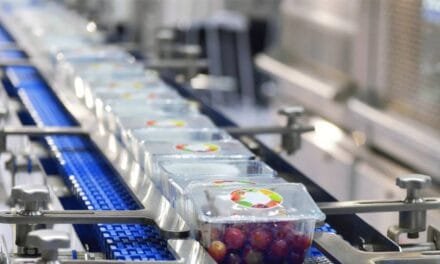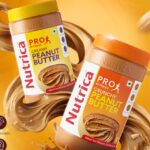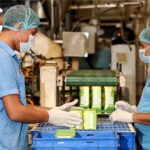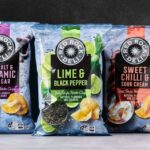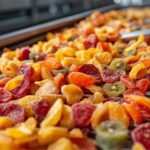The Palmyra Palm has great economic potential. Every part of it can be used for value-added palm products, such as Palm syrup, Palm jaggery, Palm sugar granules, and other by-products, explain T.R. Thirumuruga Ponbhagavathi, K. Shunmuga Priya and J.I. Jergin.
Various Value-added Palmyra Palm Products
India boasts the largest population of palmyrah palms globally, estimated at nearly 122 million. Recognised as a “tree of life,” every part of the palmyra palm serves various purposes such as food, beverage, fibre, fodder, and timber. Despite the rich nutritional content of edible palm products, their commercialisation has been hindered by a lack of value addition. In South India, the sweet sap extracted from the palm’s inflorescence holds significant importance, contributing to the production of palm sugar.
The edible Palmyra palm products are rich in vitamins and minerals, but the products are not commercialised due to a lack of value addition. Among the various edible uses of the palm, the sweet sap tapped from the inflorescence for making palm sugar is of prime importance. The endosperm of the young fruit called “Nungu”, like tender coconut, is a delicacy during summer.
Value Added Palm Products
Every part of the Palmyra palm can be used for value addition and can be processed into a range of edible as well as non-edible products. Some of the value-added Palm products are mentioned below:
Toddy from Palm Tree
Palmyra Toddy is obtained by tapping the tip of the inflorescence and collecting the juice in earthen pots. The juice before fermentation, known as Neera, is a refreshing, sweet drink. Neera sap is gaining attention as a natural sweetener solution. Fermented toddy yields palm wine, arrack, and other derivatives. It is locally popular as a beverage called Tadi.
It is distilled to produce alcoholic liquor called palm wine, arrack, or arak. Rubbing the inside of the toddy-collecting receptacle with lime paste prevents fermentation, and this sap is called sweet toddy, which yields jaggery, molasses, palm candy, and vinegar.
Palmyra Arrack:
Arrack is manufactured from toddy by pot still distillation and patent still distillation. The approximate recovery of potable alcohol from toddy is 10%.
Toddy Palm Wine:
Toddy wine is an alcoholic beverage which is white in colour and sweet in taste, with a strong smell but mild taste. The tapped sap of the palm inflorescence undergoes natural fermentation due to yeast, which is present in the sap naturally. Fermentation starts soon after the sap is collected, and within two hours, it becomes reasonably high in alcohol. The alcohol content is less than 4 per cent, and it has a very short shelf life of 24 hours.
Palm Jaggery:
Palm Jaggery, also called palm gur, is highly priced due to its nutritional and medicinal properties. It has an earthy, intense taste reminiscent of chocolate. The palm jaggery is processed from the unfermented tree sap (neera). Initially, the sap is collected in slacked lime-treated earthen pots by tappers. The cleared sap after lime sedimentation and filtration is transferred into the boiling galvanised iron pan on a traditional furnace and boiled at 110°C. Neera gets transformed into a viscous fluid, which is poured into wooden moulds and allowed to harden.
About 8 litres of neera is required to get 1 kg of jaggery. The quality of gur can be improved by precipitation of lime with carbon dioxide or citric acid or unripe tamarind fruits before boiling the juice for better industrialization.
Palm Sugar:
Neera, free from debris, is boiled in an alloy vessel, adding a small quantity of superphosphate. After uniform boiling, the liquid is allowed to cool. After the removal of sediments, it is heated to 110°C for 2 hours until it reaches a honey-like consistency. The fluid is then allowed to cool and poured into a crystalliser. After forming sugar crystals, it is centrifuged to collect palm sugar. It is dried and powdered to store.
Palm Tamarind Candy:
Neera is heated for 2 hours to obtain a honey-like consistency. The syrup is then transferred to mud pots. Ripe, dry and shelled tamarind fruits devoid of seeds are added to the syrup. About 10 litres of syrup are required for 1kg of fruit. The pot is closed tightly with cloth, and vessels are kept in a shockproof, cool and dry place for 130 to 180 days. Sugar crystallises on the sutures of tamarind, and the fruits turn into delicious candies.
Palm Spread:
For the preparation of palm spread, firstly, the fruit pulp is extracted by using water (1:1) and heat (70° C for 10 min) to ensure maximum pulp recovery. The extracted pulp is mixed with other ingredients (sugar, skim milk powder, small cardamom, and citric acid) and heated on a low flame with continuous stirring till the TSS reaches 65–68 degree brix. Cooked material is then removed from the heat, filled into broad-mouthed sterilised bottles, capped, labelled and stored.
Palm Toffee:
Palm toffee is prepared by mixing fruit pulp with other ingredients like sugar, skim milk powder, glucose, maida, and starch. The mixture is cooked with constant stirring for up to 40 minutes. The endpoint is determined following the drop test in water. The container is then removed from the heat; the toffee mixture is spread on an aluminium tray, which is smeared well with oil/butter, and kept overnight in the air. Then the toffees of desirable size and shape are cut, wrapped with butter paper and stored at room temperature.
Prepared by mixing palm pulp with sugar and dairy solids, this chewy snack offers scope for product diversification in India’s growing confectionery sector.
Palm Burfi:
For palm burfi preparation, khoa, butter, and lime water are used along with fruit pulp and sugar.
Palm Pickle:
Palm fruits preserved in vinegar, appealing to niche food lovers and growing global interest in Indian-style pickles.
Palm Cola:
A unique aerated beverage made using treated palm sugar, cola essence, and carbonated water. The formulation highlights trends in functional and sustainable soft drink alternatives.
Palm cola is an aerated soft drink containing 11% sugar. Its other ingredients are cola concentrate, citric acid, and food colour. The palm sugar is treated with milk, and its impurities are removed while boiling to a temperature of 110°C-115°C. The boiling is stopped at 53 degrees Brix, and the mixture is filtered through a filter press.
Cola essence is added to the mixture after cooling at the rate of 250ml/1000 bottles of palm cola. Bottles of 200 ml, previously sterilised, are filled with the mix at the rate of one fluid/bottle. This is carbonated with carbon dioxide and sterilised water. About 1kg of purified palm sugar is sufficient to produce 300 bottles of palm cola.

Tender Fruit:
Nungu, the soft jelly-like endosperm obtained from the tender fruit of palmyrah is highly perishable and seasonal. However, nungu can be processed and preserved as value-added palm products. Due to its high perishability, efforts are being made to process and preserve Nungu — opening opportunities in commercial freezing technologies.
Palmyra Sprout:
It is a sprout that grows on Palmyra palms. The germinated seed’s hard shell is also cut open to take out the crunchy kernel, which tastes like a sweeter water chestnut. It is called “dhavanai” in Tamil. The white kernel of the ripe palm fruit, after being left for a few months, has its uses. It can be dried or boiled to form Odiyal, a hard chewable snack. It can be used by sugar patients.
Canned Palm:
Jelly-like kernels of half-grown soft-shelled seeds of palm are canned in clear, mildly sweetened water for exportation purposes. Processed and canned jelly-like palm kernels cater to export markets, contributing to India’s food processing export potential.
Other Palmyra Palm Products:
Ripe fruit pulp can be processed into soft beverages, jam, and other delicious food items and sweets.
Conclusion
In conclusion, the Palmyra palm stands as a remarkable resource in India, with its diverse applications offering both nutritional and economic benefits. With value-added products like palm jaggery, toddy, cola, and burfi, there is immense potential for expanding the palm-based industry through sustainable food innovation.
With careful processing and value addition, every part of the palmyra palm can be harnessed for consumption and commercial purposes, contributing not only to the local economy but also providing unique and flavorful products for a wider audience. The potential for further exploration and innovation in the utilisation of palmyra palm presents exciting opportunities for sustainable agriculture and the development of a vibrant palm-based industry.
As India strengthens its agro-processing sector, government incentives and food safety support will be crucial for elevating palmyrah palm into a mainstream commercial crop.






